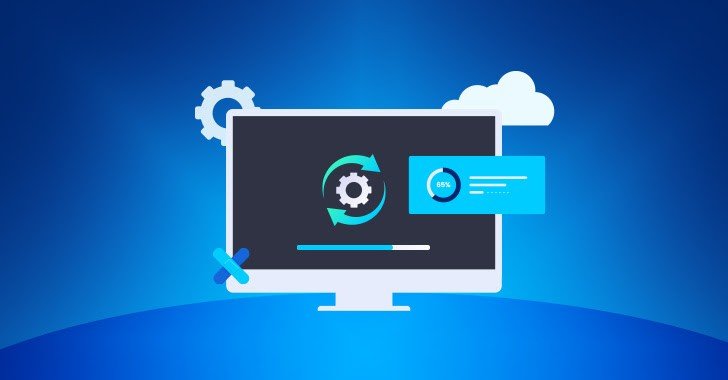In today’s digital landscape, securing software applications is more critical than ever. With increasing cyber threats and sophisticated attack vectors, ensuring the security of your applications is essential to protect sensitive data and maintain user trust. This guide explores essential measures to safeguard your software applications from vulnerabilities and threats, offering best practices and strategies for robust software security.
Understanding Software Security
Software Security: Software security involves protecting applications from various threats and vulnerabilities that could compromise their integrity, confidentiality, and availability. This includes safeguarding against attacks such as data breaches, malware infections, and unauthorized access.
Importance: Effective software security is crucial for preventing data loss, ensuring compliance with regulations, and maintaining the trust of users and stakeholders. As software applications become more complex and interconnected, the need for robust security measures grows.
Essential Measures for Software Security
1. Implement Secure Coding Practices
Input Validation: Ensure all user inputs are validated and sanitized to prevent injection attacks and other input-based vulnerabilities. Use parameterized queries and prepared statements to protect against SQL injection.
Error Handling: Implement proper error handling to avoid exposing sensitive information through error messages. Avoid displaying stack traces and detailed error information to users.
Code Reviews: Conduct regular code reviews to identify and address security flaws. Peer reviews and static code analysis tools can help uncover vulnerabilities early in the development process.

2. Use Encryption to Protect Data
Data Encryption: Encrypt sensitive data both in transit and at rest using strong encryption algorithms. This includes encrypting communication channels (e.g., TLS/SSL) and data stored in databases.
Key Management: Implement robust key management practices to protect encryption keys. Ensure keys are securely stored, rotated regularly, and accessible only to authorized personnel.
Secure Protocols: Use secure communication protocols such as HTTPS, SSH, and SFTP to protect data during transmission. Avoid using outdated or insecure protocols.
3. Implement Authentication and Authorization
Strong Authentication: Use multi-factor authentication (MFA) to enhance security for user accounts. MFA requires users to provide additional verification beyond just a password, such as a code sent to their phone or an authentication app.
Role-Based Access Control (RBAC): Implement RBAC to restrict access to resources based on user roles. Ensure that users only have access to the data and functionality necessary for their role.
Session Management: Manage user sessions securely by implementing session timeouts and securely handling session tokens. Ensure that session tokens are invalidated upon logout.
4. Regularly Update and Patch Software
Software Updates: Keep all software, including third-party libraries and dependencies, up-to-date with the latest security patches. Regular updates address known vulnerabilities and reduce the risk of exploitation.
Automated Patching: Implement automated patch management systems to streamline the process of applying security patches and updates. This ensures that critical vulnerabilities are addressed promptly.
Vulnerability Management: Continuously monitor for security vulnerabilities in your software and infrastructure. Use vulnerability scanning tools to identify and address potential weaknesses.
5. Conduct Security Testing and Audits
Penetration Testing: Perform regular penetration testing to simulate real-world attacks and identify potential security weaknesses. Penetration tests help uncover vulnerabilities that may not be detected through other testing methods.
Security Audits: Conduct comprehensive security audits to assess the effectiveness of your security measures. Audits should include reviewing security policies, procedures, and compliance with regulatory requirements.
Continuous Monitoring: Implement continuous monitoring tools to detect and respond to security incidents in real-time. This includes monitoring for unusual activity, unauthorized access, and potential breaches.
6. Educate and Train Your Team
Security Awareness Training: Provide regular security awareness training for your development and operations teams. Training should cover best practices, emerging threats, and secure coding techniques.
Phishing Awareness: Educate employees about phishing attacks and how to recognize suspicious emails and messages. Encourage them to report potential phishing attempts to IT or security teams.
Incident Response Training: Ensure that your team is trained in incident response procedures. Develop and practice response plans for handling security incidents and breaches.
Implementing a Security Framework
Security Frameworks: Adopt established security frameworks and standards, such as the OWASP Top Ten, NIST Cybersecurity Framework, or ISO/IEC 27001. These frameworks provide guidelines and best practices for securing applications and protecting data.
Compliance: Ensure compliance with relevant industry regulations and standards, such as GDPR, HIPAA, and PCI-DSS. Compliance requirements often include specific security measures and practices that must be followed.
Continuous Improvement: Regularly review and update your security policies and practices to adapt to evolving threats and technological advancements. Continuously seek ways to improve your security posture and address emerging risks.
Conclusion
Protecting your software applications from security threats requires a comprehensive approach that includes implementing secure coding practices, using encryption, enforcing authentication and authorization, and conducting regular security testing. By adopting these essential measures and staying vigilant, you can safeguard your applications from vulnerabilities and maintain the trust of your users and stakeholders. Prioritizing software security is crucial for ensuring the integrity, confidentiality, and availability of your applications in an increasingly complex and threat-filled digital landscape.
